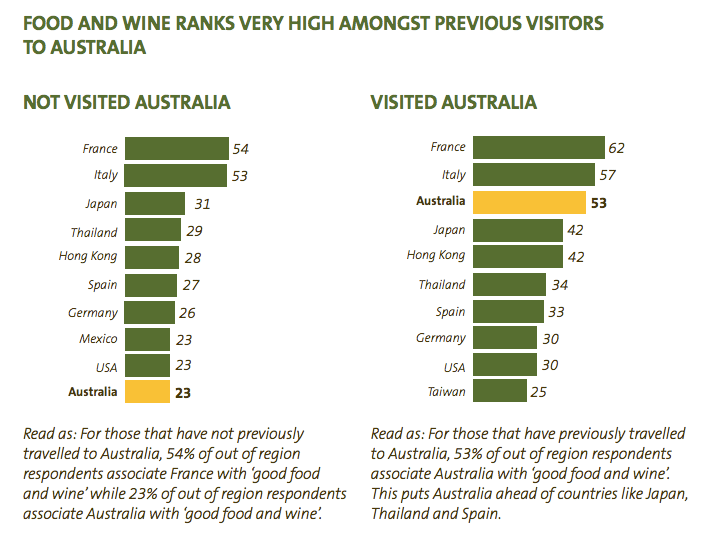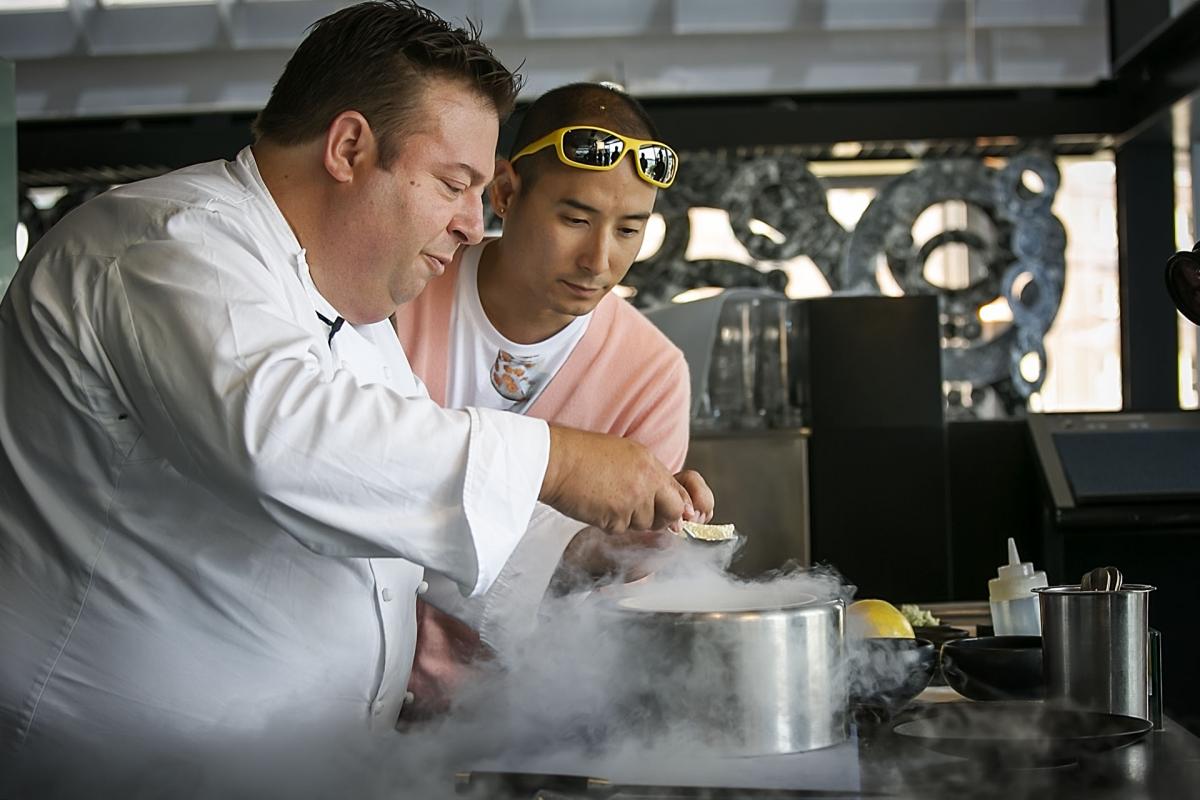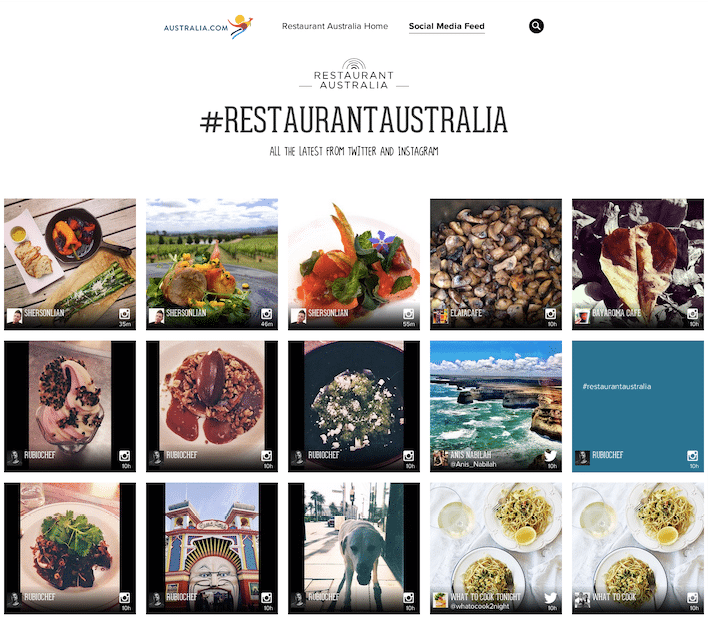Skift Take
Cuisine is a gateway to destinations. The key to culinary tourism is maintaining the cultural identity of its edible offerings while still catering to the global palette.
Restaurant Australia is an $8.6 million advertising campaign from Tourism Australia that’s focused on the country’s food scene and agriculture.
The culinary campaign, which launched in May, became part of a long-term and overarching campaign, “There’s Nothing Like Australia,” because data showed that Australia was viewed as a destination with good food and wine.
In the Tourism Australia Consumer Demand Project of 2013, Australia moved from 10th place to third place — behind France and Italy — as the place to visit after survey participants had experienced the country’s gastronomic offerings. The U.S. ranked ninth in the survey.
Prior to visiting Australia, survey respondents from Indonesia, Korea, Japan, Germany and the U.S were the least enthusiastic about Australia’s cuisine.
For people surveyed who have visited, those from China, the U.S., India and the UK rank Australia as No. 1 for food and wine. These figures supported its investment in traditional and digital marketing and social promotion.
The campaign included pop-up restaurants in London, themed food trucks in France, and the ultimate dinner voyage for the world’s influential foodies in Tasmania last weekend.
Given the increased independent travel by residents of China, Australia’s geographical advantage is an opportunity to deepen the country’s consideration with these Chinese travelers.
The Restaurant Australia campaign included a $3.16 million in spend across Greater China, Hong Kong, Japan, South Korea, Singapore, Malaysia, Indonesia, and India. Besides advertising on print and television, Restaurant Australia built up its presence with a separate website that included a social feed to explore Australia’s food and beverage offerings in eight states — Australian Capital Territory, New South Wales, Northern Territory, Queensland, South Australia, Tasmania, Victoria and Western Australia.
Nick Baker, CMO of Tourism Australia said, “Combined with the integration with Instagram, which lends itself particularly well to sharing food and wine experiences, we wanted to really get people talking about Australia’s exceptional food and wine offering to specifically address the perception gap which exists. A key component of this was to bring the content back into our website.”

Source: Tourism 2020, Tourism Australia
When asked about Tourism Australia’s social media advocacy of bringing purveyors and restaurants from the regions together, Baker explained “In the first phase of the campaign we got the industry to tell their stories to illustrate the authenticity and the platform for engagement and connection.”
At the culmination of the campaign, hashtag activity for #restaurantaustralia reached 21,441 contributions on Instagram and 28,155 on Twitter, according to Totem.co and Tweet Archivist, respectively.
From a social media perspective, what did flying and cruising 86 people down under accomplish? According to Tweet Archivist on November 18, the last 100 tweets for #seeaustralia garnered 26,000 impressions, while and #restaurantaustralia garnered 190,000 impressions. This campaign clocked in a 7.3 times discovery lift over its branded hashtag.
With one-day social meet-ups like “The Invite the World To Dinner” and “Tourism and Event Queensland’s Ultimate Instameet,” the real challenge is tracking and turning these retweets, @mentions, and site visits into trips to Australia to sample the food, wine and culture.
The Daily Newsletter
Our daily coverage of the global travel industry. Written by editors and analysts from across Skift’s brands.
Have a confidential tip for Skift? Get in touch
Tags: culinary tourism, social media, tourism australia
Photo credit: Peter Gilmore and Steven Yi-Fan at Quay, Sydney (left to right) Tourism Australia / Restaurant Australia

